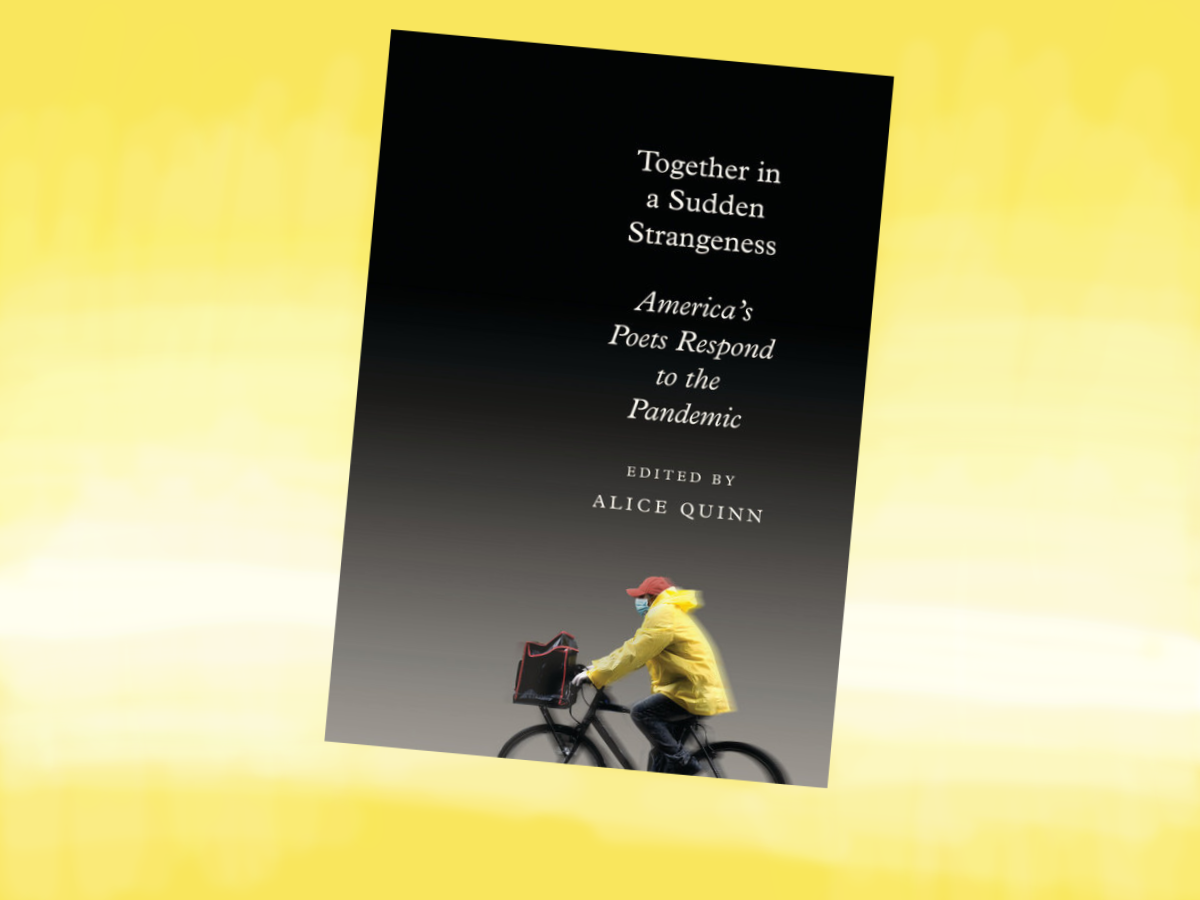“Poets have always been those we turn to as witnesses. Poets can crystallize a moment like this,” says New Yorker poetry editor Alice Quinn. These turbulent times mean that many people are turning to poetry, be it as a distraction or an outlet. The effects of the epidemic on the world will certainly begin to seep into longer forms of art, such as movies and novels, but the immediacy of poetry often speaks to people in the moment. When it comes to creating poems during the pandemic, writers are taking many different approaches to capture and cope with the current crisis.
Quinn has reached out to many writers and compiled a poetry anthology with more than 80 works inspired by and written during the COVID-19 epidemic. Together in a Sudden Strangeness: America’s Poets Respond to the Pandemic, released digitally on June 9, includes works by Ada Limón, Carl Phillips, Li-Young Lee, Vijay Seshadri, Julia Alvarez, and many others. Its collected works promise to feature a wide range of tones—from grieving to humorous to resilient—and experiences—from mourning lost loved ones to commending essential workers to recovering from the virus itself. The new anthology aims to not only share these individual responses to the pandemic, but also inspire other writers to put their experiences into words.
Contributor Major Jackson said that he and his wife, Didi, began writing every day while in isolation to distract themselves “from current events [while] also absorbing them.” However, a number of the authors Quinn contacted admitted to feeling creatively stifled by the pandemic. It is easy to feel overwhelmed by current events, and that anxiety can spill into the writing process, even for professional poets. Ada Limón said she too felt “flattened and silenced” by the global shut-down. Limón overcame this block by writing what she called an anti-poem, listing things she no longer had access to; the cathartic piece, titled “The End of Poetry,” was published in the New Yorker and connected with many readers.
Websites and organizations are doing their part to keep writers inspired and connected. Poets.org has started a “Shelter in Poems” movement, collecting poems to help readers across the globe find “courage, solace, and actionable energy.” The site hosted a virtual reading during National Poetry Month, with the chosen poems often relating to the feelings of isolation and solidarity emerging from the global crisis. Alison Pill commented, before her reading of “Let Evening Come” by Jane Kenyon, that leaning on poetry allows you to feel “seen and heard” during these times of “chaos and paranoia.” Many other readers echoed the sentiment, saying they drew comfort from poetry written in other contexts and applied the same messages to the current crisis.
One pandemic-born poem that stands out in the anthology is Juan Felipe Herrera’s aptly titled “Social Distancing.” Its interesting pinwheel design—created by Anthony Cody—literally distances the lines in the poem, making for a thought-provoking physical representation of the separation we are all experiencing. Herrera, a former U.S. Poet Laureate, stated that it “can be read in any direction, or simultaneously with various voices at a ‘distance.’” Though isolated in the center of the design, the hopeful words “Healing begins” are also spotlighted by the surrounding lines.
Despite social distancing, many poets are making efforts to virtually bridge the gap between themselves and their peers. Quarantine has even fueled some creative new projects at home. Kate Belew began co-writing poetry line-by-line via email with her friends Emi Bergquist and Jackie Braje. What started with small exchanges soon fueled the project Pandemic Poems, which spread as many other poets hopped into their inboxes to create collaborative works. “Maybe poetry is quicker than cells multiplying, and maybe it’s a remedy in itself,” Belew remarks on the website.
On May 1, Pandemic Poems teamed up with the Poetry Society of New York for a 24-hour event, during which participants were paired up to write sonnets together. Each poet was assigned a first and last line for their piece; the rest of the poem was collaboratively written, passed between partners throughout the day. The results were compiled by PSNY into “a sonnet crown (or ‘corona’) of epic proportions,” a beautiful representation of how many different voices can come together in times of crisis.
While every person’s response to the pandemic is different, poetry has proven to be a great source of support for many. Some use it as a collaborative comfort, filling the six-foot spaces between us by sharing words of solidarity. Others embrace it as a method of solitary solace, drawing meaning from others’ works. Others still are using their own words to creatively journal the ongoing situation, immortalizing their unique experiences. Regardless of how poetry speaks to you, its power is helping many pull through the struggles of the coronavirus crisis.

Sanjana is a second-year undergraduate student at Drexel University pursuing a degree in English with a concentration in Writing. She enjoys playing video games, cracking open a new book, and daydreaming. She writes poetry, short fiction, articles, and essays.
